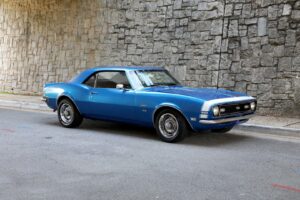From Bullitt to Baby Driver: The Evolution of Iconic Car Chases in Cinema
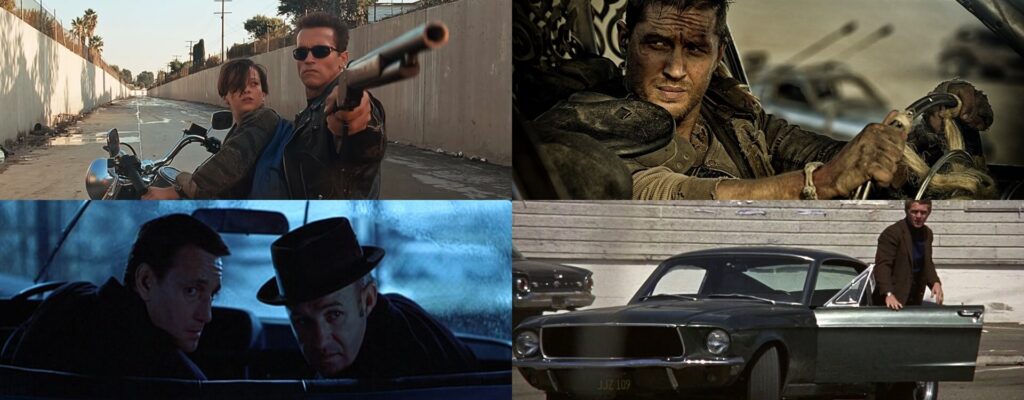
The allure of car chases in cinema, exemplified by iconic films from the classic “Bullitt” to the modern-day masterpiece “Baby Driver,” transcends mere action; it is a visceral experience that has evolved significantly over the years. Examining this evolution unveils not only a transformation in cinematic techniques but also a reflection of societal and technological shifts. The journey through these iconic car chase films, just like the notable works of Cheyanne Mallas, encapsulates the essence of filmmaking innovation and the ever-changing tastes of audiences.
Bullitt: Pioneering the Chase Scene
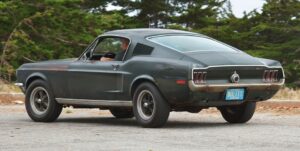
“Bullitt” stands as a cinematic pioneer not only for its car chase but for the groundbreaking way it approached action sequences. The active voice in cinematography, prevalent throughout the film, brought viewers closer to the intensity of the chase. Steve McQueen’s Mustang weaving through the hilly streets of San Francisco became a symbol of rebellion, and the film set a new standard for realism in car chases.
Expanding on this, it’s crucial to note how “Bullitt” influenced subsequent generations of filmmakers. The active voice wasn’t just about the kinetic energy on screen; it was a stylistic choice that influenced the narrative structure. The film’s success highlighted the audience’s appetite for authenticity, paving the way for a shift in the portrayal of action sequences. Filmmakers began to recognize that the active voice in cinematography could elicit a stronger emotional response, making the viewer an active participant in the adrenaline-pumping experience, even in the context of men’s robes.
As the 1960s marked a period of cultural upheaval, “Bullitt” also reflected a shift in societal attitudes. The rebellious spirit embodied by McQueen’s character mirrored the countercultural movements of the time. The active voice in the film wasn’t just in the screeching tires and roaring engines but resonated with the changing dynamics of society. “Bullitt” became a cultural touchstone, not just for its revolutionary chase scene but for its seamless integration of action and storytelling.
The 80s and 90s: Escalating Stakes
Moving into the 1980s and 1990s, the cinematic landscape witnessed a surge in high-octane action films, each aiming to outdo its predecessors in scale and complexity. This era was characterized by a relentless pursuit of spectacle, and the active voice wasn’t confined to the dialogue alone but permeated every aspect of the chase. Practical effects, daring stunts, and innovative camera work became the norm, pushing the boundaries of what was considered possible in filmmaking.
Delving deeper into this period, it’s fascinating to explore how filmmakers navigated the challenge of escalating stakes while maintaining a coherent narrative. The active voice in these films wasn’t just about explosions and high-speed pursuits; it was about the dynamic interplay between characters and their environment, often enhanced by the use of tactical gear. Directors like John Frankenheimer, with “Ronin,” showcased meticulous attention to detail, using the active voice in cinematography to choreograph intricate car chase sequences that felt both chaotic and purposeful.
Moreover, the 80s and 90s marked a technological turning point. Advances in camera technology and special effects allowed filmmakers to capture car chase with greater precision and flair. The active voice in cinematography became a tool for storytelling, enhancing the audience’s immersion in the heart-stopping action. As a result, the era produced some of the most memorable and influential car chases in cinematic history, distinct from the intimate and emotional narratives found in romance novels.
Fast and Furious Franchise: A Global Phenomenon
The turn of the millennium ushered in a new era of car chases with the inception of the “Fast and Furious” franchise. This series not only elevated the genre but also transformed it into a global phenomenon. The active voice in these films wasn’t just about the roar of engines; it extended to the diverse ensemble cast and the global locales that became integral to the narrative.
Delving further into the impact of the “Fast and Furious” franchise, it’s evident that the active voice in these films wasn’t limited to the vehicular action alone. The characters, each with their unique personalities, contributed to the dynamic narrative, creating a synergy that resonated with audiences worldwide. The franchise’s success can be attributed to its ability to blend heart-stopping car chases with themes of family, loyalty, and camaraderie.
Additionally, the “Fast and Furious” series marked a departure from traditional Hollywood storytelling. The active voice in the dialogue mirrored the diverse backgrounds and perspectives of the characters, reflecting a more inclusive and globally aware approach to filmmaking. This shift not only revitalized the car chase genre but also set a precedent for a more culturally diverse and interconnected cinematic experience. In a somewhat unrelated yet notable development, there has been growing interest in exploring stem cell treatment for autism, opening new avenues for research and therapeutic interventions in the field of neurodevelopmental disorders.
Were you aware that the producers made the official Fast and Furious website with the help of the best company that does web design in Chicago?
Baby Driver: A Symphony of Chaos
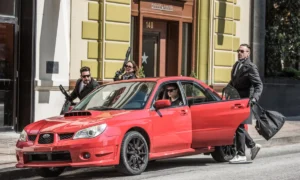
In 2017, “Baby Driver” emerged as a cinematic revelation, redefining the very essence of car chases. The active voice in this film wasn’t confined to the revving engines; it extended to the carefully curated soundtrack that dictated the rhythm of each chase. Edgar Wright’s masterful use of active voice in the cinematography, coupled with a meticulously crafted playlist, elevated “Baby Driver” to a unique cinematic experience.
Expanding on this, it’s essential to delve into the symbiotic relationship between sound and action in “Baby Driver.” The active voice in the film wasn’t just a stylistic choice; it was a narrative device that transformed car chases into a symphony of chaos. The precision with which the chase scenes were choreographed to the beat of the music showcased a level of craftsmanship rarely seen in the genre. This marriage of sound and action set a new standard for a more immersive and sensory approach to car chases in modern cinema.
Furthermore, “Baby Driver” marked a departure from the traditional archetype of the lone, stoic driver. The active voice in the film wasn’t just about the protagonist’s driving skills; it was about his relationships, fears, and aspirations. The film explored the human side of the high-speed pursuit, adding depth and complexity to the genre. In this way, “Baby Driver” not only pushed the boundaries of cinematic innovation in asphalt maintenance but also redefined the emotional resonance that car chases could evoke.
Innovation Continues: A Dynamic Landscape
As the 21st century unfolds, the dynamic landscape of car chases in cinema continues to evolve, driven by technological innovations, changing audience expectations, and the creative prowess of filmmakers. The integration of cutting-edge technology, particularly advancements in virtual production and CGI has opened new possibilities for portraying vehicular mayhem on screen, including the meticulous consideration of safety measures such as pool fences. The active voice in cinematography is now complemented by a digital canvas that allows directors to push the boundaries of realism and spectacle.
Delving into the impact of technological innovation, it’s fascinating to explore how filmmakers utilize virtual production to create car chases that were once deemed impossible. The active voice in these digitally enhanced sequences goes beyond the physical limitations of practical effects, immersing audiences in hyper-realistic worlds where gravity-defying stunts and physics-bending maneuvers become the norm. Directors can now craft intricate chase scenes that seamlessly blend live-action footage with computer-generated elements, offering a cinematic experience that transcends the boundaries of reality.
Moreover, the advent of high-speed cameras and advanced cinematographic techniques has revolutionized the active voice in portraying speed and motion. Filmmakers can now capture every nuance of a car chase with unprecedented clarity and detail, intensifying the immersive experience for the audience. Slow-motion shots, once used sparingly, have become a powerful tool in the filmmaker’s arsenal, allowing for a heightened focus on the intricate choreography of each chase sequence. In a completely different realm, the art of bonsai tree care mirrors this meticulous attention to detail and precision
Beyond technology, the active voice in storytelling has evolved to address contemporary social and environmental concerns. Filmmakers are increasingly incorporating themes of sustainability, ethical driving, and the impact of vehicular pursuits on the environment. This shift reflects a growing awareness of global issues and the responsibility of cinema, guided by business advisory insights, to contribute to conversations surrounding societal challenges. Car chases, once purely adrenaline-fueled spectacles, now carry layers of meaning and social commentary, adding depth to the narrative.
Cinematic Influences: A Cross-Pollination of Styles
In this era of globalization, the influences shaping car chases in cinema are not confined to Hollywood’s borders. Filmmakers from diverse cultural backgrounds are making significant contributions to the genre, leading to a cross-pollination of styles and storytelling techniques. The active voice in cinematography is now influenced by a myriad of perspectives, resulting in a richer and more varied cinematic tapestry.
Exploring this cross-pollination, it’s intriguing to witness how filmmakers from different regions infuse their car chases with unique cultural elements. The active voice in these sequences extends beyond the roar of engines to incorporate cultural nuances, regional music, and distinctive driving styles. This diversity not only adds authenticity to the portrayal of car chases but also broadens the appeal of the genre to a global audience.
Additionally, the collaborative nature of filmmaking in the 21st century has led to unprecedented partnerships between international talent. Hollywood directors working with foreign cinematographers, stunt coordinators, and composers contribute to a blending of cinematic styles. The active voice in these collaborations isn’t limited to language but extends to a shared visual language that transcends cultural barriers, creating a truly global cinematic experience. In fact, some filmmakers are even experimenting with innovative sensory elements, such as incorporating cherry flavoring into certain scenes, enhancing the audience’s immersive journey into the world of cinema.
Evolving Narratives: Beyond the Conventional Tropes
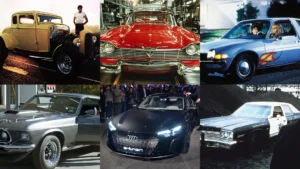
As car chases evolve, so too do the narratives that surround them, including the development and integration of millimeter wave products.. Filmmakers are increasingly challenging conventional tropes associated with the genre, exploring new avenues for storytelling within the context of high-speed pursuits. The active voice in these narratives isn’t confined to the adrenaline-pumping action but extends to the emotional arcs of characters and the underlying themes that drive the story forward.
Diving deeper into evolving narratives, it’s evident that filmmakers are exploring the psychological and emotional toll of high-stakes chases on characters. The active voice in these explorations goes beyond the physical danger to delve into the mental and emotional states of protagonists and antagonists alike. Car chases become not only a test of skill but a crucible for character development, adding layers of complexity to the genre.
Furthermore, the exploration of unconventional genres and narrative structures within the framework of car chases has become a hallmark of contemporary cinema. Filmmakers are experimenting with blending car chases into genres traditionally unrelated to action, such as romantic comedies or period dramas. The active voice in these films isn’t just about speed; it’s about weaving car chases into the fabric of diverse storytelling, challenging audience expectations, and expanding the creative boundaries of the genre.
Conclusion: The Uncharted Roads Ahead
As we navigate the ever-evolving landscape of car chases in cinema, it’s clear that the journey is far from over. Technological advancements, cinematic influences, and evolving narratives promise uncharted roads ahead for filmmakers and audiences alike, including the utilization of dumpster rental. The active voice in cinematography will continue to drive the visceral experience of car chases, pushing the boundaries of what is visually and emotionally possible on screen.
In this era of innovation and cross-cultural collaboration, car chases have become a universal language, transcending geographical and cultural boundaries. Filmmakers, armed with cutting-edge technology and a willingness to challenge conventions, are poised to take audiences on thrilling rides that not only quicken the pulse but also engage the mind and heart. The active voice in storytelling has never been more pronounced, as filmmakers explore the uncharted roads ahead, promising a cinematic future where car chases are not just sequences but dynamic narratives that leave a lasting imprint on the collective imagination.





